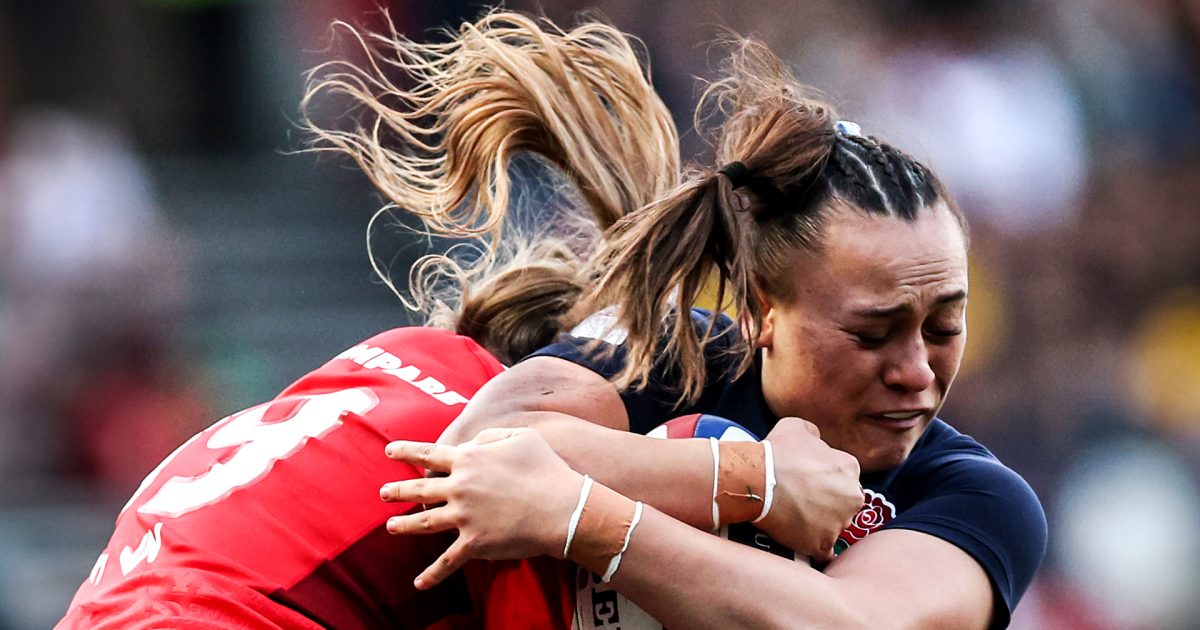Wales women tap into powers of menstruation

Natalia John, the Wales and Brython Thunder lock, has been playing rugby for over a decade. For most of that time she couldn’t explain why her performance levels would fluctuate so dramatically over the course of a month.
One week she was hammering out personal bests in the gym and backing that up with energetic displays on the pitch. A week or two later, she was nowhere near her best.
“I’d feel lethargic for no apparent reason,” she says.
“I’d get in my head and tell myself that I was weak and criticise myself. It wasn’t until our [Wales] physio, Jo Perkins, gave us a briefing on our menstrual cycles that I began to realise that these changes were totally normal.”
Now, in collaboration with the founding principal partner of Wales Women’s and Girl’s Rugby, Vodafone, Wales’ women are trialling a new concussion tracking technology to help female athletes better understand how the different phases of their menstrual cycle impact their performance, wellbeing and recovery.
Collecting data through an app on their phones, players are also able to monitor their symptoms of concussion from day to day.
Research from the University of Birmingham suggests that female athletes may suffer from both higher rates of concussion, as well as more severe and prolonged symptoms, compared to their male counterparts. Though the research is still being developed, there are suggestions that hormone variations could be a key factor.
“We’ve been able to see differences across the different phases of their menstrual cycle and the symptoms that they might be having,” Perkins explains.
“It’s a massive step in our research. We can see that in certain phases certain women may have either prolonged or heightened symptoms. Tracking concussions is something we’ve done for a while, but this helps us do so on an app in a user friendly way.
“There is some evidence to suggest that when players are in the luteal phase – right after ovulation – when progesterone [which prepares the lining in the uterus which helps a fertilised egg impact and grow] is higher, there is some evidence to suggest that women have more severe symptoms if they sustain a concussion.
“They think that’s because when suddenly the progesterone drops. That can have a potentially inflammatory effect which could result in longer symptoms.”
This information is a potential game changer for female players who, until recently, have been largely left in the dark regarding changes in their energy levels.
“It’s really empowering,” says John. “Before I’d attribute it to me feeling crap for no reason and then I’d in my head because I didn’t know what was going on. Now I accept that sometimes I won’t feel at my best and that allows me to give myself a break. Which then allows me to make more gains when I’m feeling on it.
“I’m now judging my on-field performances a little differently. Obviously I want to perform at my best every time, but there will be weeks where my body won’t be as strong or as on it.”
Both John and Perkins are optimistic that this new technology, along with more open conversations around female health, will advance the women’s game. There are numerous examples of sport leading the rest of society when it comes to social and cultural change and tethering high performance to something unique to women could break down existing stigmas.
“Historically various aspects of female health haven’t been discussed for reasons such as embarrassment, or it’s something that hasn’t been associated with performance,” Perkins adds.
“But now it’s clear that pelvic health, breast health, incontinence and severe menstrual cycle symptoms are all directly linked with high performance.
“The culture should be one where it is open and we talk about this. Not that we consider them normal, because we hopefully don’t have any women with severe symptoms of any sort. But if they do occur, we treat them appropriately without any shame or embarrassment.
“It’s a dream,” Perkins continues. “The evidence is showing us that we can actually add to the players’ loads in the luteal phase is very interesting. We can use our cycles to our advantage and that is very exciting for female sport. That is the same for the rest of the science where we individualise the programmes to suit the athlete and get the most out of their unique cycle. ”
The gap between the men’s and women’s game is closing every season in terms of support and the on-field product on show. But this is one variable that the likes of Antoine Dupont, Siya Kolisi and every other leading man will never have to contend with.
Soon enough, menstrual cycles will be regarded as advantages, rather than hindrances, for women at the elite level.
“Who knows where I’d be in my career if I had this technology when I started and I never gave myself such a hard time?” John wonders. “But I’m all about moving forward and I see it as a great opportunity that we have now to create something special for players down the road.
“In 10 years’ time we’ll have better concussion protocols, the players will be better protected and they’ll have more information about the relationship between the periods and their performance. I know some people might be apprehensive because it’s all so new, but we see it as a great responsibility to be taking this on.”






































































